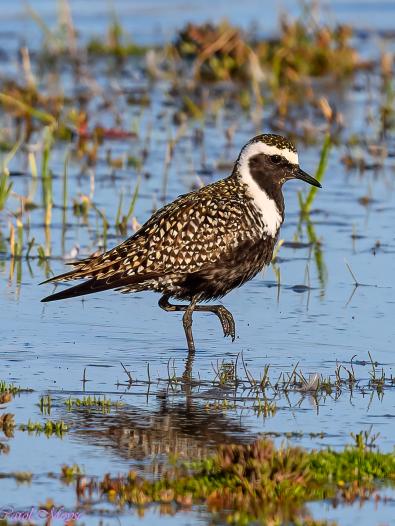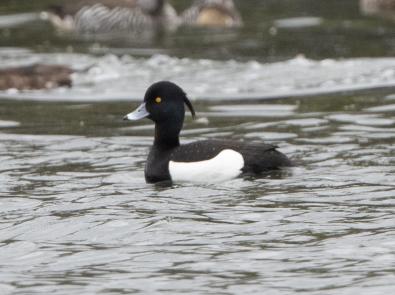
Melbourne’s Western Treatment Plant a real tweet this World Migratory Bird Day
This World Migratory Bird Day, Melbourne Water and bird watchers alike are in a flutter following a 'mega rare' bird sighting after the American Golden Plover was confirmed in Victoria for the very first time. This stunning bird recently graced the Western Treatment Plant (WTP) in Werribee with its presence for a memorable week and a half.

"The bird seemed happy and healthy at the WTP; it was seen feeding on the abundant food sources found within the mudflats of our conservation ponds. Given the plover was decked out in full breeding plumage and hasn't been seen for a few days, we are hoping the bird has begun its trek north to its breeding grounds in Alaska," WTP Conservation and Land Officer, Cody McCormack said.
The American Golden Plover flew off course from its migration path between Alaska and South American grasslands in Argentina, Uruguay, and southern Brazil.
Another exciting coup is the recent arrival of the rare and critically endangered, Orange-bellied Parrot from south-west Tasmania. The Orange-bellied Parrot makes its way to WTP in April to feast upon the species-rich salt marsh vegetation throughout winter before returning home for the summer to breed.
World Migratory Bird Day in 2024 (May 11) will focus on the importance of insects for migratory birds and highlight concerns related to decreasing insect populations.
At the WTP, the thriving environment for insects — specifically bloodworms and flying midges — is not just a part of the ecosystem, but a lifeline for many migratory bird species. However, the decreasing insect populations pose a serious threat, underscoring the urgency of our conservation efforts.
In 2019, the Tufted Duck (aka 'Goth Duck') made its way from Northern Europe to the WTP — the first time it had been

seen in Australia — when it would usually migrate to Asia. Described as having a Nick Cave-like black quiff, it travelled much further than '500 miles'.
The WTP stands out as a haven for migratory birds due to its unique features. Its network of nutrient-rich lagoons, which maintain water levels all year round, provides an ideal habitat for waterbirds. Additionally, the dense and species-rich coastal salt marsh is a crucial sanctuary for rare species like the Orange-bellied Parrot.
The WTP, a part of Melbourne's globally recognised Ramsar wetlands, stands as a beacon of hope for migratory birds and other species. It is one of the only facilities in Australia that actively manages artificial ponds, providing crucial roosting and feeding habitat for migratory bird species during high tide on the coastline.
Get the latest birdwatching updates here.
Small group tours and birdwatching permits are available at the Western Treatment Plant.
For more information on birdwatching, visit birdwatching at the Western Treatment Plant.
Media contact:



